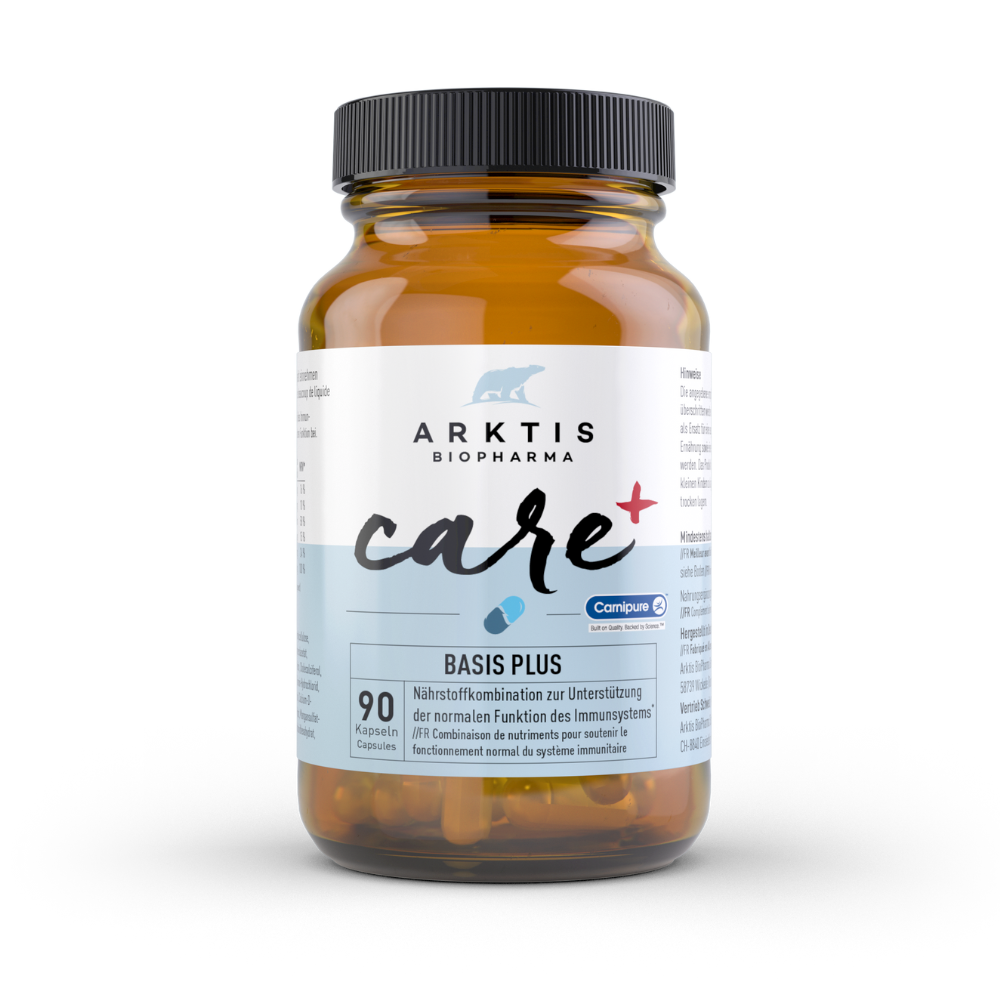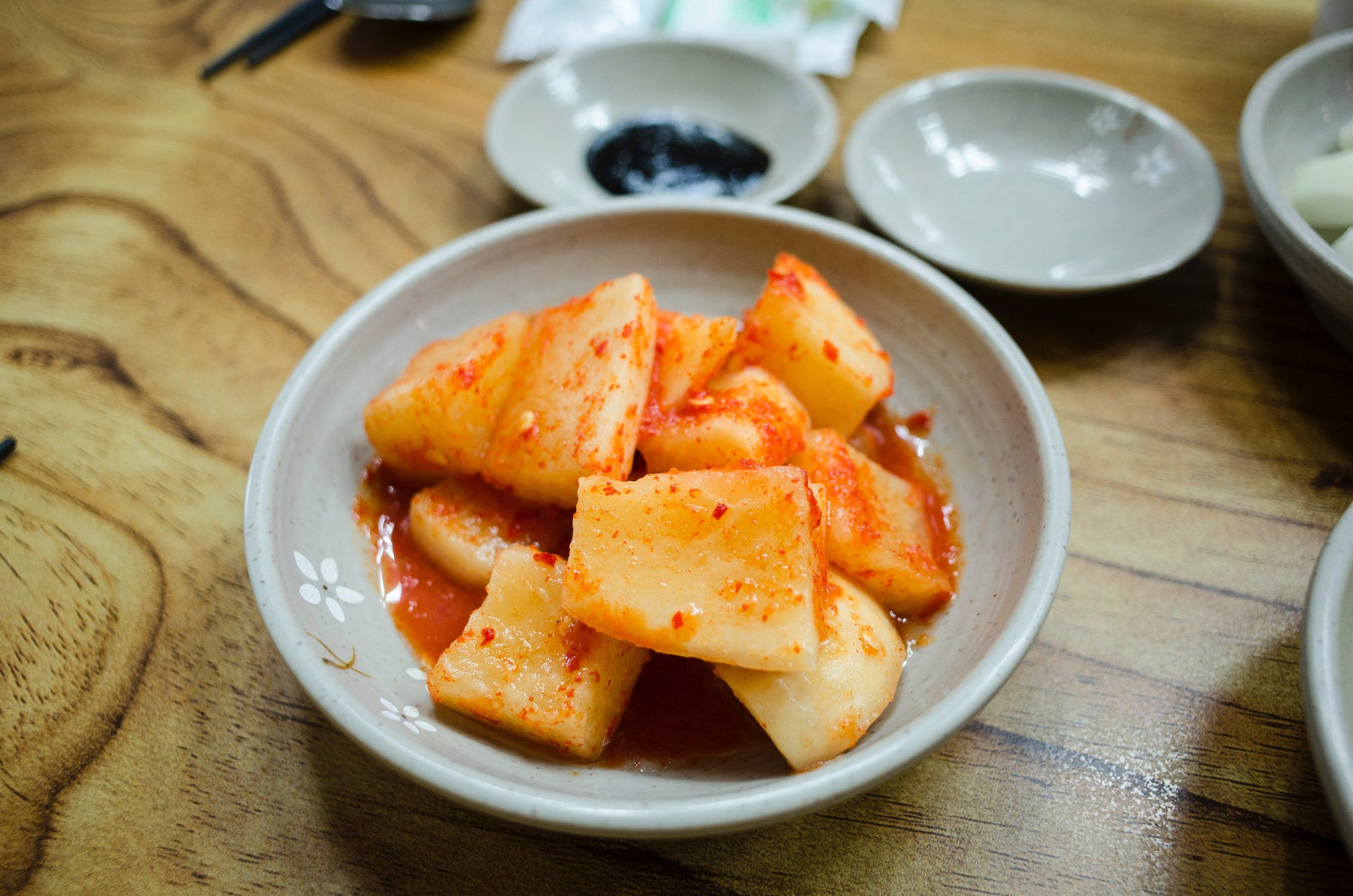Kimchi - sauerkraut in Asian - is a national dish of Korea. For Koreans, kimchi is an important part of meals, whether breakfast, lunch or dinner. All kinds of vegetables can be used to make the spicy and sour vegetable, such as Chinese cabbage, spring onions, cucumber and radish. Spices are added and the mixture is fermented in lactic acid. This preserves the vegetables in a jar for longer and also changes their flavor.
Kimchi for the gut
At Arktis BioPharma Switzerland, we have been specializing in intestinal health for more than 15 years. Many of our patients' stool analyses have shown us that the vast majority of people have too few acid-forming bacteria in their gut and that the pH value in the gut is too high for most people, i.e. too alkaline.
What are the consequences of this?
If the gut has too few acid-forming bacteria, harmful bacteria can be deposited more easily on the intestinal mucosa. In addition, an overly alkaline gut is a good breeding ground for fungi such as Candida. The consequences of such a shift in intestinal flora can be flatulence, constant tiredness, mood swings, ravenous appetite attacks or migraines.
The acid-forming bacteria need an acidic environment, which means that excessive use of alkaline powders, taking acid blockers or medication such as antibiotics can contribute to a lack of bifido- or lactobacilli, for example. It is also the case that we hardly eat any lactic acid fermented foods any more, such as sauerkraut or homemade kefir.
Fermented foods back in fashion
In the past, fermentation was mainly used to preserve vegetables. The bacteria that had colonized the cabbage felt particularly at home in the cabbage juice that emerged when it was kneaded with salt. These bacteria utilize the cabbage's sugars and produce lactic acid, which helps to preserve the cabbage.
In recent times, the practice of fermenting or preserving has become less familiar to most people and things like kefir, sauerkraut or fermented drinks such as bread drink, kvass or kombucha are at most bought. The problem with store-bought products, however, is that they are usually pasteurized (i.e. heated). And as soon as I heat a product above 40 degrees, the beneficial lactic acid bacteria are gone. Fementation is currently back in fashion. Numerous food bloggers have recognized the positive effects of fermented foods, which is why fermentation is now back in fashion.
Recipe for homemade kimchi
I have a simple recipe for you on how to make kimchi at home. Kimchi is an all-round delicious and healthy vegetable. It is low in calories and contains lots of fiber, vitamins and minerals.
 Ingredients for 1 jar
Ingredients for 1 jar
medium-sized head of Chinese cabbage
carrots, finely sliced or grated
1/2 sour apple, grated
spring onions, finely sliced
tbsp untreated sea salt
fresh ginger, roughly chopped
3-4 garlic cloves
1-2 tbsp chilli flakes (to taste)
Preparation
Roughly chop the Chinese cabbage. Place in a large bowl with the carrots, apple and spring onions. Add the salt and leave to stand for a few minutes.
In the meantime, finely chop the ginger, garlic and chilli flakes in a food processor and mix well. Add this mixture to the cabbage in the bowl.
Then knead the vegetables vigorously with your hands until the cabbage softens and a good amount of liquid collects at the bottom of the bowl. Leave the bowl at room temperature for a few hours and knead the vegetables again from time to time.
Gradually pour some of the kimchi into a large, sealable jar and press down well so that the liquid pushes to the top. Continue like this until all the kimchi is in the jar. There should be enough liquid to cover all the cabbage in the jar. There should also be some space between the kimchi and the lid.
Place the lid on loosely and leave to stand for 2-4 days. Taste the kimchi from time to time until it is to your liking. Then put it in the fridge. It will keep there for several months.
Of course, we are now interested to know if you are planning to try this recipe. Are you perhaps interested in receiving more recipes from us that are good for your intestinal flora? Write us a comment, we look forward to reading from you!
















